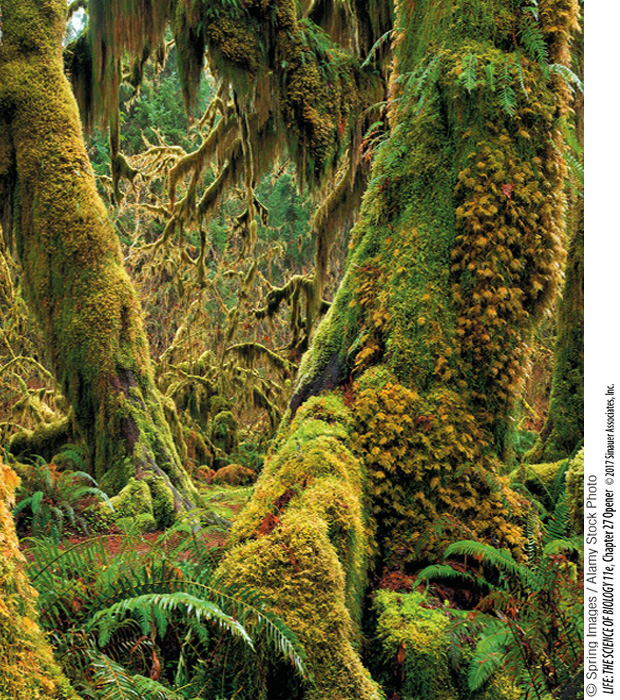Chapter Introduction
572
27
key concepts
27.1
Primary Endosymbiosis Produced the First Photosynthetic Eukaryotes
27.2
Key Adaptations Permitted Plants to Colonize Land
27.3
Vascular Tissues Led to Rapid Diversification of Land Plants
Plants without Seeds:
From Water to Land

investigating life
A Toxic Spill of Ancient Fossil Algae
In the Gulf of Mexico, about 60 kilometers south of the Louisiana coast, the oil rig Deepwater Horizon was drilling an exploratory oil well in the seafloor beneath about 1,500 meters of water when, on April 20, 2010, an explosive blowout occurred and could not be contained. Over the next 3 months, almost 5 million barrels of petroleum flowed from the well into the Gulf, making this event the worst marine oil spill in history. The spill caused massive mortality among marine life, as well as considerable damage along the coast as the oil floated to the surface and washed ashore.
Why was oil to be found so deep beneath the Gulf, and what led geologists to expect to find oil there? Most people know that petroleum is a fossil fuel, meaning that it is derived from the ancient remains of once-

Today there is great interest in using solar power to help meet human energy needs. But unicellular eukaryotes capitalized on this process first, and very long ago. Single-
Given that petroleum is derived naturally from green algae, can humans use green algae to produce oil commercially?